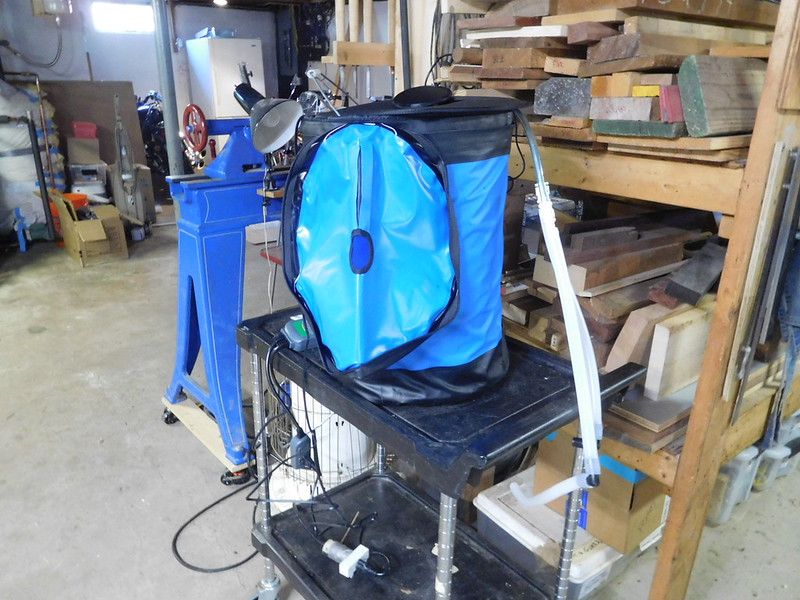KING OF SCORPIONS
Member
Hello everyone. Beginner meader here having an issue getting fermentation going with a recipe I freestyled together myself. My recipe is as follows-
In a 1 gallon carboy:
3.5 lbs clover honey
3 lbs of cotton cotton grapes juiced / strained (no skins or pulp)
2 cups of local UV pasteurized apple cider (no preservatives. ingredients say "100% juice from apples")
filled with filtered water to 1 gallon
stirred together vigorously
OG of my mixture came to 1.170
My yeast of choice is Mangrove Jack's M05 Mead Yeast (High attenuation 18% tolerance)
I used the TOSNA calculator (at TOSNA CALCULATOR | Mead Made Right ) to determine my yeast, Go-Ferm, and Fermaid-O amounts. I hydrated my yeast with the Go-Ferm and Fermaid-O and pitched.
Tosna calculator suggested 4 grams of yeast (seemed like a bit much for a 1 gallon batch but i listened to it), 5 grams Go-Ferm, and 2.4 grams of Fermaid-O.
However... After 24 hours the yeast appears to be proliferating without fermenting. I see it spreading along the bottom and floating along to top and getting "bready" in smell and appearance. My other meads have not gotten bready like this.
I siphoned out my must into another container to ditch the yeast layers on the top and bottom and tried re-pitching my yeast again with some raisins. So far it's yielded the same result. Just getting bready along the top and bottom without making bubbles again.
Can anyone tell me what the breadiness is likely an indicator of? Are my nutrient amounts off?
Thanks!
In a 1 gallon carboy:
3.5 lbs clover honey
3 lbs of cotton cotton grapes juiced / strained (no skins or pulp)
2 cups of local UV pasteurized apple cider (no preservatives. ingredients say "100% juice from apples")
filled with filtered water to 1 gallon
stirred together vigorously
OG of my mixture came to 1.170
My yeast of choice is Mangrove Jack's M05 Mead Yeast (High attenuation 18% tolerance)
I used the TOSNA calculator (at TOSNA CALCULATOR | Mead Made Right ) to determine my yeast, Go-Ferm, and Fermaid-O amounts. I hydrated my yeast with the Go-Ferm and Fermaid-O and pitched.
Tosna calculator suggested 4 grams of yeast (seemed like a bit much for a 1 gallon batch but i listened to it), 5 grams Go-Ferm, and 2.4 grams of Fermaid-O.
However... After 24 hours the yeast appears to be proliferating without fermenting. I see it spreading along the bottom and floating along to top and getting "bready" in smell and appearance. My other meads have not gotten bready like this.
I siphoned out my must into another container to ditch the yeast layers on the top and bottom and tried re-pitching my yeast again with some raisins. So far it's yielded the same result. Just getting bready along the top and bottom without making bubbles again.
Can anyone tell me what the breadiness is likely an indicator of? Are my nutrient amounts off?
Thanks!
Last edited:



